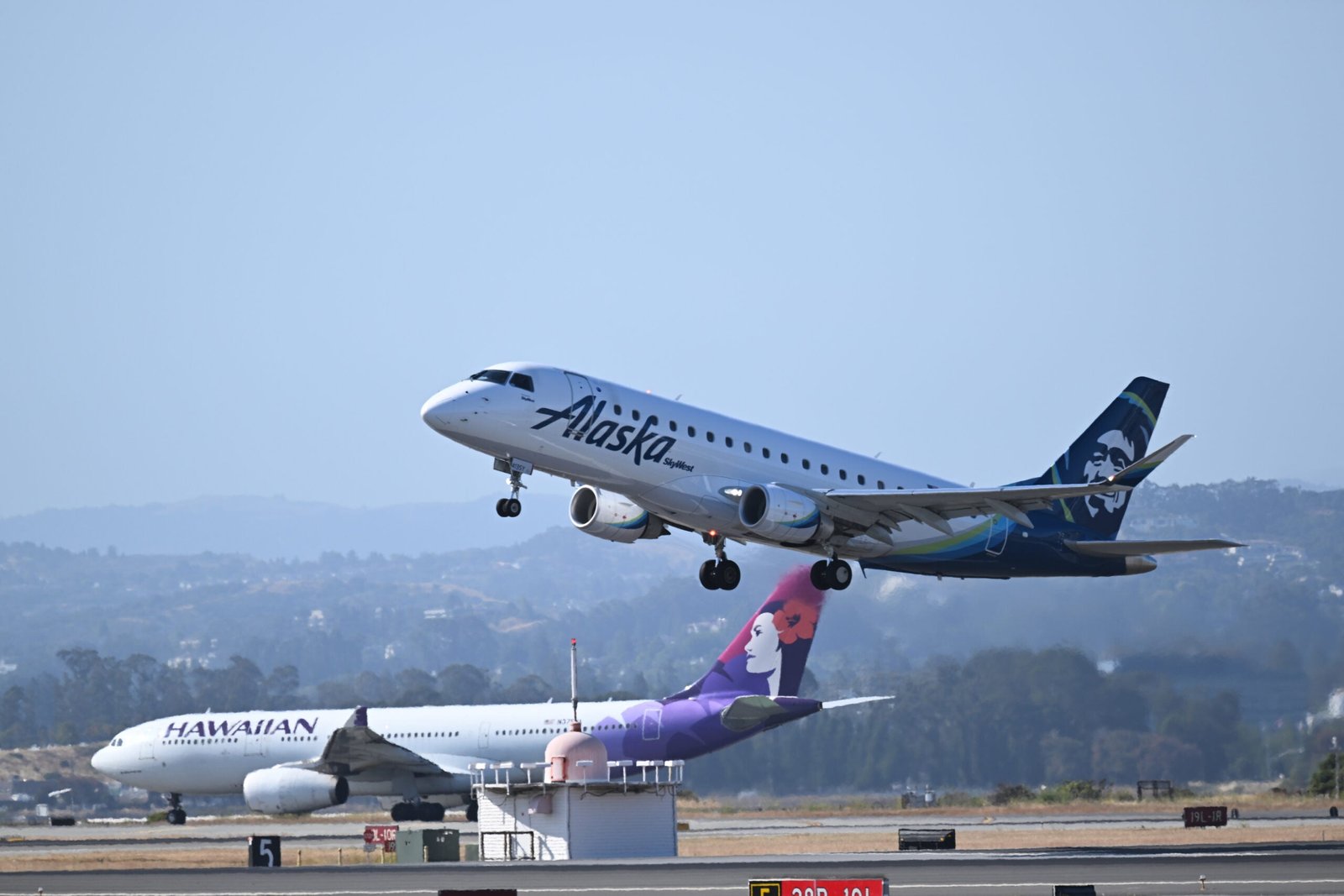Alaska Airlines and Hawaiian Airlines announced on Sunday their plans to merge, joining a growing list of U.S. airlines seeking to expand and compete through consolidation. Under the agreement, Alaska Airlines would acquire Hawaiian for $18 per share, totaling approximately $1.9 billion, including debt.
The merger is expected to enhance the competitiveness of both carriers domestically and globally, as well as expand their destination offerings and solidify their presence on the West Coast. The two airlines stated that their respective brands would continue to exist on a single operating platform, including a single loyalty program. However, it remains unclear which aspects of the airlines’ operations and brands will be integrated and which will be kept separate. The merger is projected to result in synergies of around $235 million.
During a conference call with investors, Alaska Airlines CEO Ben Minicucci explained that while the airlines would maintain two customer-facing brands, they would operate under a single operating certificate and combine work groups from both airlines under one collective bargaining agreement. Minicucci acknowledged that many details regarding how the two brands will coexist have yet to be determined, emphasizing the need for careful execution.
Minicucci drew a parallel between the combined frequent flyer program and hotel programs like Marriott Bonvoy, where separate hotel brands operate under a unified umbrella. The merger would establish the combined entity’s headquarters in Seattle, Alaska Airlines’ current base, with Honolulu serving as a key hub.
The merger would position the combined airline as the fifth-largest in the U.S. in terms of fleet size, boasting a total of 365 aircraft. However, if the pending merger between JetBlue and Spirit is approved in federal antitrust court, the Alaska-Hawaiian combination would drop to the sixth-largest position. JetBlue is set to have 296 aircraft by the end of the third quarter, while Spirit will have 204 aircraft by the end of 2023.
Hawaiian Airlines has faced challenges amid the COVID-19 pandemic and is expected to record a loss for 2023. However, the reopening of Asian markets, particularly Japan, has provided a boost, with approximately 25% of Hawaiian’s revenue coming from transpacific travelers. The airline also faces competition from Southwest on inter-island and West Coast routes.
Following the merger, the combined airline would become a member of the Oneworld airline alliance, expanding Alaska Airlines’ existing membership that began in early 2021. The alliance would initially serve 138 destinations, including 29 international markets, with access to over 1,200 destinations through Oneworld partners. The combined entity would employ around 31,200 individuals and serve an estimated 54.7 million passengers annually.
Both airlines affirmed their commitment to Hawaii, highlighting their operational presence and leading position in the state’s $8 billion leisure market. The merged carriers would retain over 50% of the Hawaiian air market share and preserve and expand union-represented jobs in Hawaii. Alaska currently allocates more than 10% of its capacity to Hawaii and will maintain pilot, flight attendant, and maintenance bases in Honolulu.
The airlines did not address whether they anticipate regulatory challenges to the merger. The Biden administration has displayed an anti-consolidation stance across various industries, including airlines. The Department of Justice successfully blocked a partnership between JetBlue and American Airlines, arguing that it effectively amounted to a merger. A proposed merger between JetBlue and Spirit is also being challenged by the DOJ under antitrust laws.
Initial reactions from employee groups at both airlines expressed caution. The Association of Flight Attendants and the International Association of Machinists and Aerospace Workers indicated that their support for the merger would depend on guarantees of benefits and protections for employees.
Overall, the merger between Alaska Airlines and Hawaiian Airlines holds the potential to create a competitive force in the airline industry, expanding their reach and offerings while navigating the challenges of regulatory scrutiny and employee concerns.

